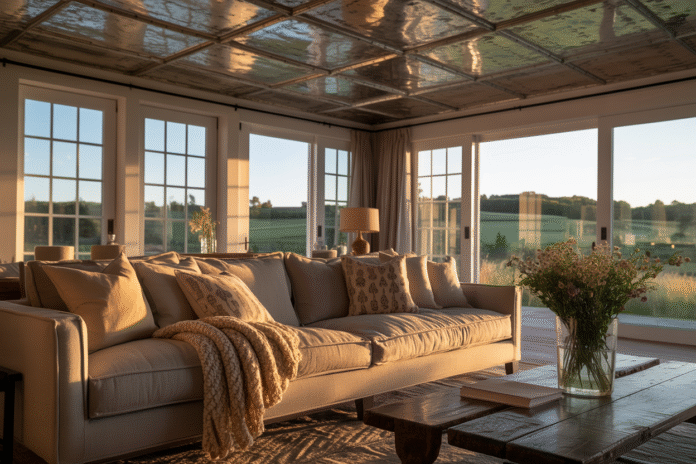Your ceiling might be sabotaging your home’s sale before buyers even notice your gorgeous hardwood floors or that expensive kitchen renovation. While you’ve been focused on updating countertops and painting walls, that fifth wall overhead could be broadcasting outdated design choices that immediately date your home and turn off potential buyers.
Recognizing and addressing these ceiling design mistakes can mean the difference between a quick sale and months of showings with no offers. From overly ornate medallions to those dreaded popcorn textures, certain ceiling choices scream different decades for all the wrong reasons. The good news is that most of these issues are fixable with some planning and elbow grease, transforming your space from a time capsule into a buyer’s dream.
16. Ceilings with too many tiny recessed lights
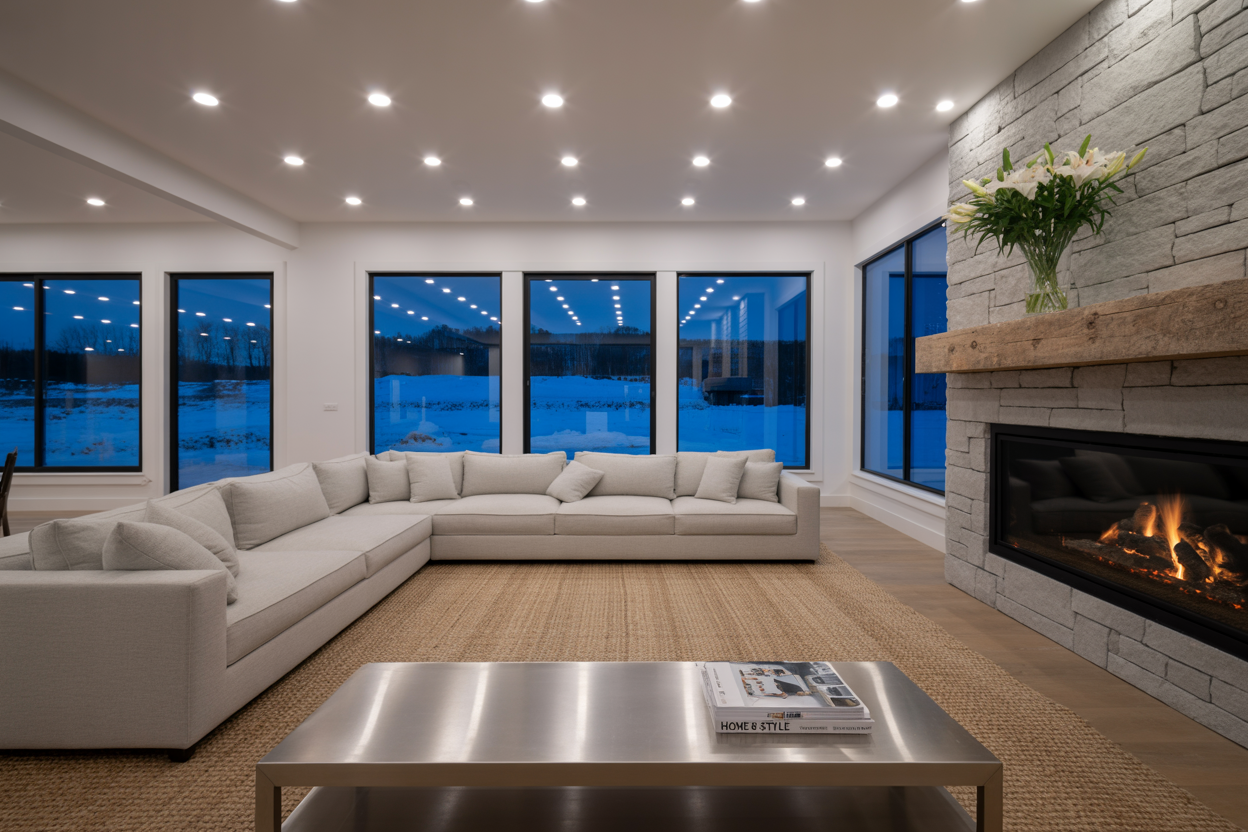
The grid of recessed ceiling lights trend has taken over DIY projects everywhere. You’ve probably seen these “canned light” installations that turn every room into what looks like a grocery store.
Too many can lights create harsh, uninviting environments that feel more like hospital corridors than cozy homes. Your buyers will notice this sterile atmosphere immediately.
The problem isn’t just aesthetic. These installations often ignore basic lighting design principles, creating uneven illumination and unflattering shadows on faces.
Recessed lighting gained popularity in the 1960s for commercial spaces like stores and offices. Your home shouldn’t feel like a retail environment.
Modern buyers prefer layered lighting approaches. They want table lamps, pendant lights, and sconces that create warmth and personality.
If you’re stuck with an over-lit ceiling, consider removing some fixtures and patching the holes. Your space will immediately feel more residential and welcoming.
15. Inconsistent ceiling heights without purpose

Random ceiling height changes throughout your home create visual chaos that confuses buyers. When you drop a ceiling in the middle of a room for no apparent reason, it looks like a mistake rather than intentional design.
The key word here is “purpose.” Strategic ceiling height variations can define spaces beautifully. But when you have eight-foot ceilings that suddenly jump to ten feet and back down again, buyers wonder what’s hiding up there.
This scattered approach makes your home feel choppy and poorly planned. Ceiling height plays a crucial role in shaping the look and feel of a room, so inconsistent heights without clear design intent work against you.
Buyers prefer homes that flow naturally from room to room. When ceiling heights bounce around like a pinball, it disrupts that flow and makes spaces feel disconnected.
If you’re dealing with structural limitations that created these height variations, consider ways to unify them visually. Paint all ceilings the same color or use consistent lighting to create harmony despite the physical differences.
14. Loud wallpaper on ceilings that scream ‘1975’
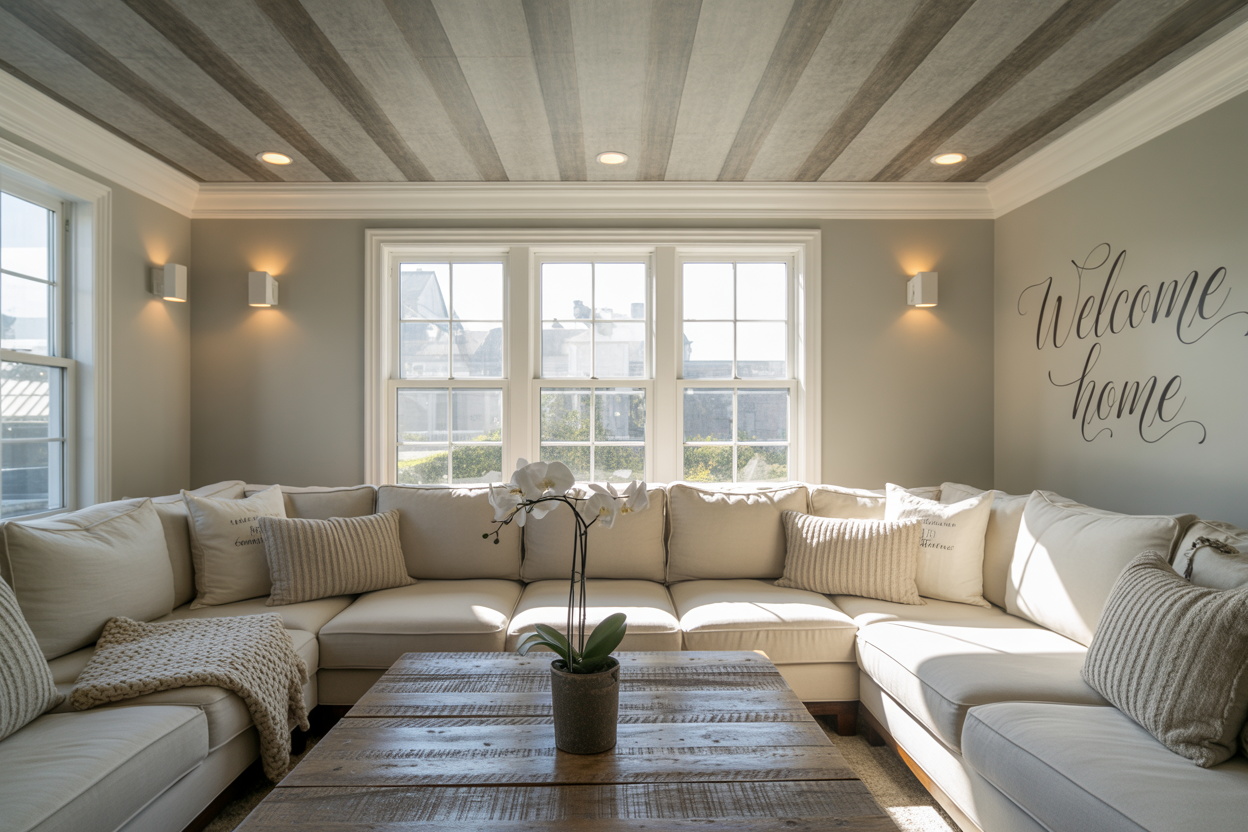
Your ceiling shouldn’t announce the year your house was decorated before guests remove their coats. Bold ceiling wallpaper made dramatic statements in the 1970s, but what felt revolutionary then now feels like a time capsule.
Those psychedelic florals and geometric patterns that once seemed cutting-edge now overwhelm modern buyers. The busy designs that covered every surface created visual chaos rather than sophistication.
Popular design trends from 50 years ago often appear tacky today, and ceiling wallpaper tops that list. Buyers expect clean, neutral spaces they can personalize themselves.
The installation alone sends red flags about maintenance nightmares ahead. Removing wallpaper from ceilings requires scaffolding, patience, and possibly professional help.
Your ceiling should enhance the room‘s proportions, not compete with furniture and artwork below. Wrong design choices turn ceilings from amazing to eyesore, and loud vintage wallpaper definitely qualifies.
Modern buyers want move-in ready homes, not renovation projects that start above their heads.
13. Fake wood paneling on ceilings

Your ceiling’s fake wood paneling screams “1970s basement rec room” louder than a disco ball. This dated trend fooled nobody then and certainly won’t fool today’s buyers.
Faux wood ceiling panels might seem like an affordable way to add character, but they often look cheap and artificial. The repetitive grain patterns and uniform coloring give away their synthetic nature immediately.
Modern buyers prefer authentic materials or clean, minimalist ceiling designs. Your fake wood creates visual clutter that makes rooms feel smaller and darker.
The maintenance headache alone should make you reconsider. Dust settles into every groove, and cleaning becomes a tedious chore that involves individual panel attention.
Real wood ceilings cost more but deliver genuine warmth and character. If budget constraints force your hand, consider wooden false ceiling designs using actual wood materials instead.
Your fake panels also limit future design flexibility. Removing them often damages the original ceiling, creating expensive repair work for the next owner.
Skip this outdated trend entirely. Clean drywall or authentic wood beams will serve your space better and won’t send buyers running for the exit.
12. Fluorescent panel lighting embedded in ceilings

Those harsh fluorescent panels that once dominated office buildings have no place in today’s homes. The unflattering light they cast makes everyone look like they’re suffering from a mild illness.
Modern buyers associate fluorescent ceiling panels with sterile institutional settings. Your dining room shouldn’t remind guests of their high school cafeteria or the DMV waiting area.
The buzzing sound these fixtures often develop over time adds another layer of annoyance. Nothing kills a romantic dinner quite like the persistent hum of aging fluorescent ballasts overhead.
While suspended ceiling fluorescent lights may provide uniform illumination, they create a cold, unwelcoming atmosphere. Today’s buyers expect warm, layered lighting that enhances the home’s ambiance.
The grid system required for these panels also dates your ceiling immediately. It screams 1980s office renovation rather than contemporary home design.
Smart buyers know they’ll need to budget for replacing these fixtures with modern LED alternatives. That’s money they’d rather spend elsewhere, making your home less attractive in a competitive market.
11. Ceiling fan and light combo… anywhere lol
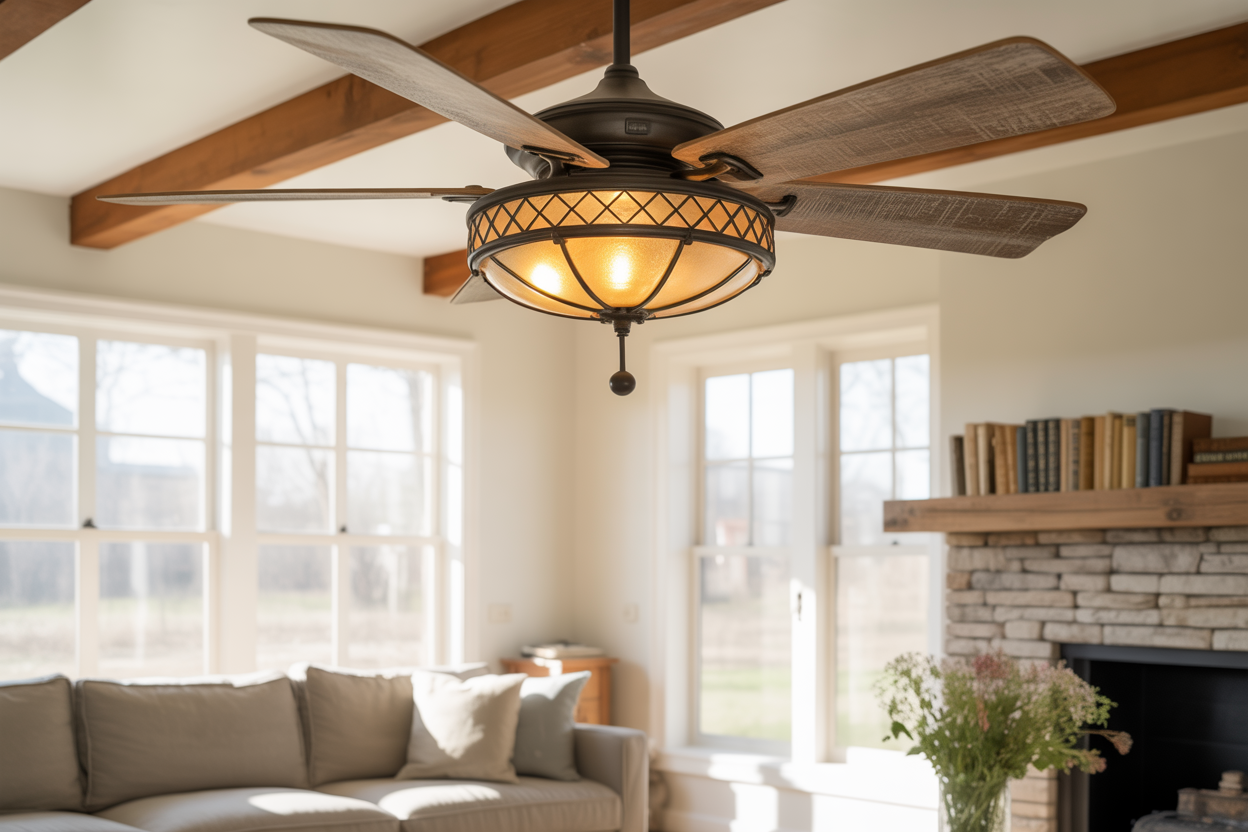
Your grandmother’s shiny brass ceiling fan isn’t making the comeback you think it is. Those gleaming, mirror-like brass finishes that dominated the 80s and 90s scream dated faster than you can say “dust collector.”
Modern buyers cringe at overly polished brass that catches light like a disco ball. The gaudy, artificial sheen feels cheap and tacky in today’s design landscape.
While brass ceiling fans are trending in 2025, it’s the warm, muted tones that buyers want. Think brushed, aged, or antique brass finishes instead of that mirror-bright polish.
Your ceiling fan should complement the room, not blind everyone who walks in. Those ultra-shiny brass finishes compete with everything else in your space for attention.
If you’re stuck with a gaudy brass fan, consider spray-painting it with a matte finish or replacing it entirely. Modern brass options offer sophisticated alternatives that won’t make buyers wonder if they’ve stepped into a time machine.
The goal is subtle elegance, not a beacon that announces your decorating choices stopped evolving decades ago.
10. Ceilings painted the same dark color as the walls
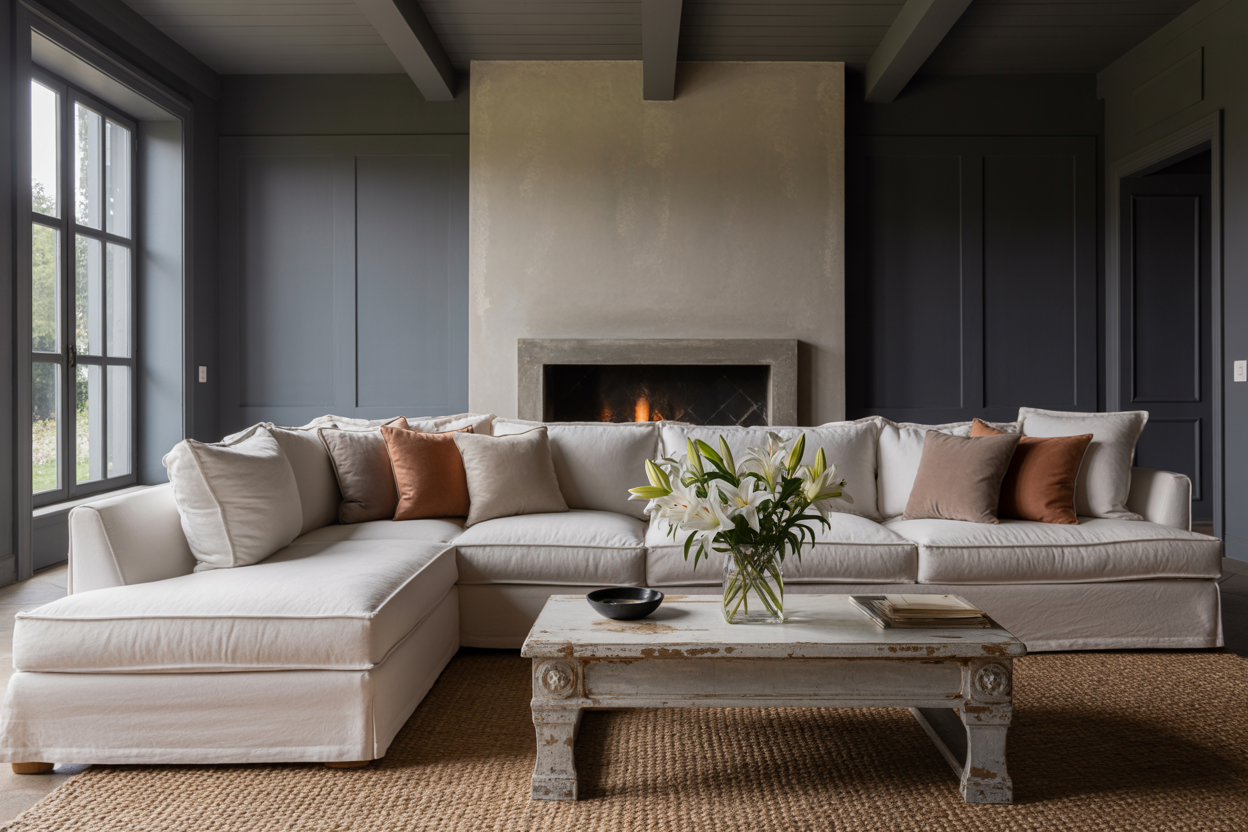
You’ve seen this trend sweep through design magazines and social media feeds. Dark walls flowing seamlessly onto the ceiling create that moody, cocoon-like atmosphere designers love to showcase.
But here’s the reality check your future buyers won’t appreciate. Dark ceiling colors make rooms feel smaller and more enclosed than they actually are.
Painting ceilings the same dark color as walls is indeed a bold move, but bold doesn’t always translate to buyer appeal. Most people want their homes to feel spacious and bright.
Your dramatic charcoal or deep navy ceiling might photograph beautifully for Instagram. However, it creates a cave-like feeling that sends potential buyers running for the nearest white paint samples.
The traditional white ceiling exists for good reasons. It reflects light, makes rooms appear larger, and provides visual breathing room above your head.
When dark colors limit design flexibility, you’re essentially boxing in your next buyer’s decorating options. They’ll need to repaint everything to change the room’s entire personality.
Save the dark drama for accent walls instead.
9. Tuscan-style textured plaster ceilings

You know those heavily textured plaster ceilings that were supposed to transport you to an Italian villa? They’ve lost their charm faster than day-old tiramisu.
These rough, rustic finishes dominated the early 2000s when everyone wanted that Old World Tuscan look. The thick, uneven plaster was meant to create an aged, weathered appearance that screamed Mediterranean sophistication.
The problem is your ceiling now looks more like cottage cheese than Chianti country. These heavy textures collect dust and cobwebs like nobody’s business, making maintenance a nightmare.
Modern buyers prefer clean lines and textured ceilings that feel fresh rather than artificially aged. The faux-finish trend has run its course.
If you’re stuck with Tuscan textured ceilings, consider updating to modern Tuscan elements that feel lighter and more refined. Your home will thank you for ditching the heavy-handed Mediterranean makeover.
Today’s buyers want authenticity, not theme park interpretations of Italian architecture.
8. Acid-washed or antiqued ceiling paint effects
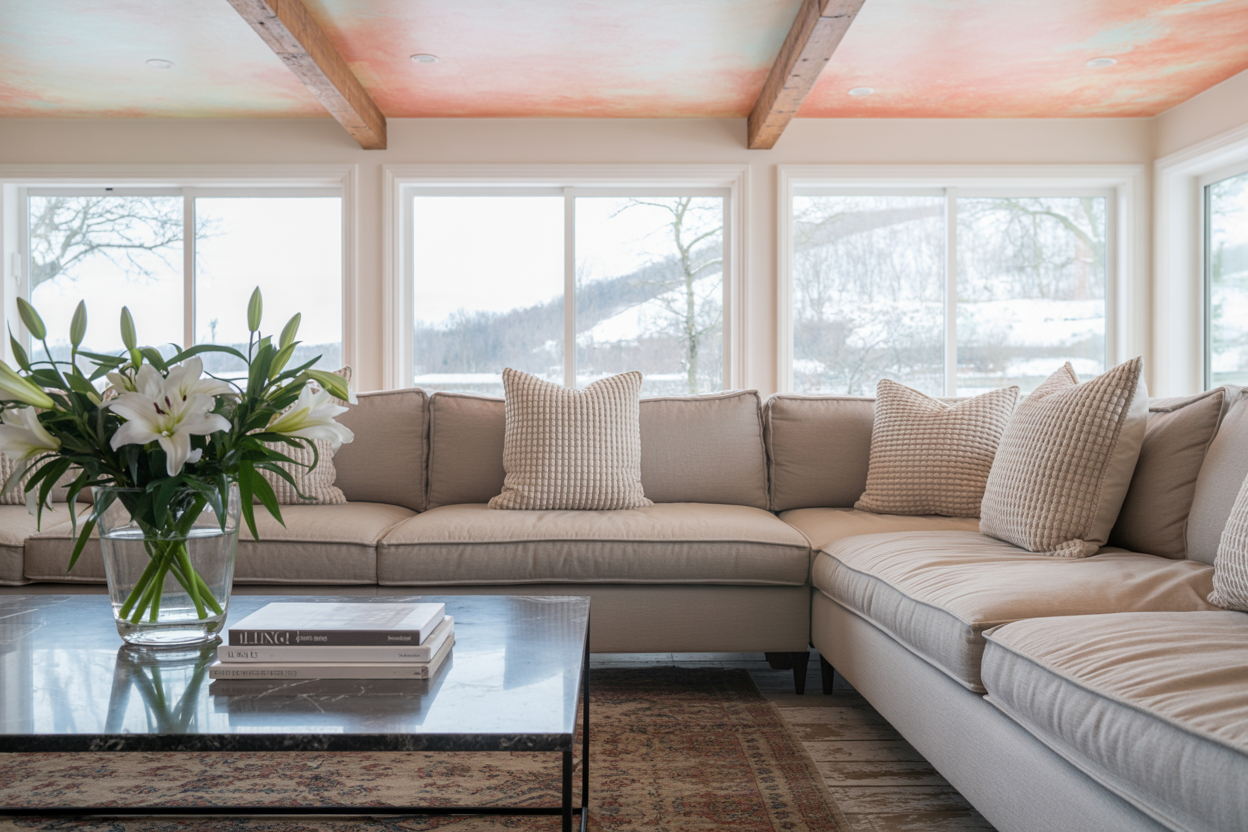
Remember when you thought making your ceiling look like it survived a medieval castle fire was the height of sophistication? Those acid-washed and antiqued paint effects that dominated the early 2000s now scream “I watched too many home improvement shows.”
These faux finishes promised to add character and depth to your ceiling. Instead, they created a mottled, uneven appearance that makes buyers wonder if you have water damage or just questionable taste.
The heavy texture and artificial aging effects collect dust and cobwebs more readily than smooth surfaces. This makes your ceiling look genuinely dirty rather than artfully distressed.
Modern buyers prefer clean, crisp lines and authentic materials. They want to see the actual architectural features of your home, not a ceiling that looks like it was attacked with steel wool and vinegar.
Today’s color-washed walls offer a more refined approach when you want texture. But save those techniques for accent walls, not overhead surfaces.
Your ceiling should enhance the room’s proportions and natural light. These dated effects do the opposite, creating visual clutter that makes spaces feel smaller and older than they actually are.
7. Overuse of ornate medallions around light fixtures
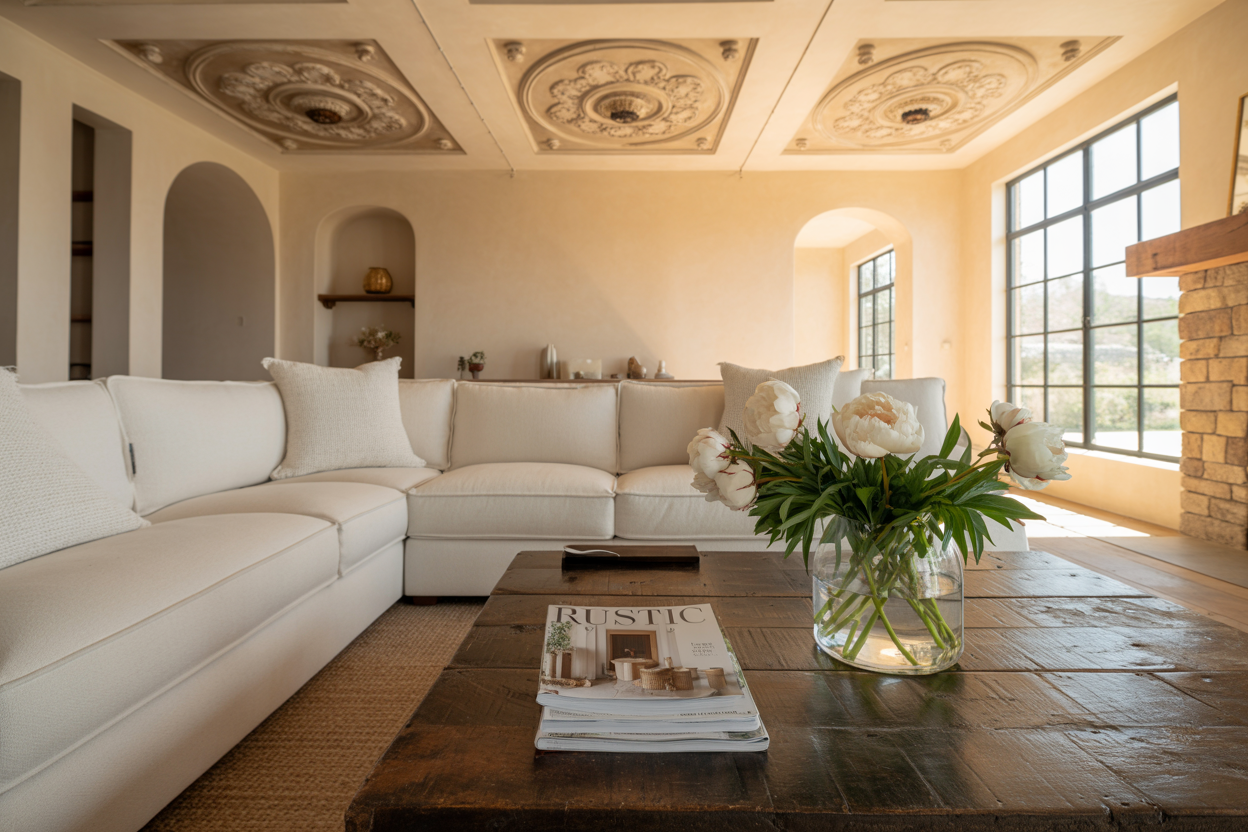
Your grandmother’s Victorian parlor called – it wants its ceiling medallions back. While these decorative circles once served a practical purpose in the 19th century, slapping them around every light fixture screams “decorator catalog circa 1995.”
The problem isn’t medallions themselves – it’s the overuse. You don’t need a ornate plaster centerpiece around your kitchen pendant lights, bathroom vanity fixtures, and hallway sconces.
Modern buyers prefer clean ceiling lines that don’t compete with their furniture and art. When every room features elaborate medallions, your home feels like a museum gift shop rather than a contemporary living space.
Ceiling medallions work best as occasional focal points in formal dining rooms or entryways – not as standard equipment throughout the house. Save the drama for spaces that actually need it, and let your other rooms breathe without the visual clutter overhead.
6. Grid-style drop ceilings visible in living spaces

Your grandmother’s office ceiling doesn’t belong in your living room. Grid-style drop ceilings with visible metal frameworks scream “commercial space” rather than “cozy home.”
These utilitarian ceiling systems work fine in basements or utility areas where function trumps form. But when you install them in main living areas, you’re essentially telling buyers this space lacks sophistication.
The exposed metal grid creates harsh lines that fragment the ceiling plane. This visual disruption makes rooms feel smaller and less cohesive than they actually are.
Modern buyers associate visible grid systems with outdated office buildings and institutional spaces. While drop ceilings are experiencing a revival, the key is making them look intentional rather than cheap.
If you need a suspended ceiling in living spaces, consider grid covers that create a coffered appearance or completely concealed systems. Your buyers will thank you for choosing elegance over convenience.
The bottom line: save the exposed grids for spaces where nobody expects design flair.
5. Cheap tin ceiling stickers

You know those peel and stick ceiling tin tiles that promise an instant Victorian makeover? They’re about as convincing as a toupee in a windstorm.
These flimsy imposters fool no one, especially potential buyers who’ve seen real tin ceilings. The adhesive backing rarely holds up to humidity changes, leaving you with drooping corners and gaps that scream “shortcut.”
Real estate agents cringe when they spot these cheap ceiling ideas because buyers immediately start calculating removal costs. The fake embossed patterns look flat and lifeless compared to authentic pressed tin.
Temperature fluctuations cause these stickers to expand and contract at different rates than your ceiling. This creates unsightly bubbles and eventual peeling that makes your ceiling look like it has a skin condition.
Smart buyers recognize quality materials from across the room. When your ceiling tiles start curling at the edges or showing obvious seam lines, you’ve advertised that corners were cut throughout the renovation process.
Skip the fake tin route entirely. Your ceiling deserves better than discount store camouflage.
4. Acoustic tile ceilings from the ’80s
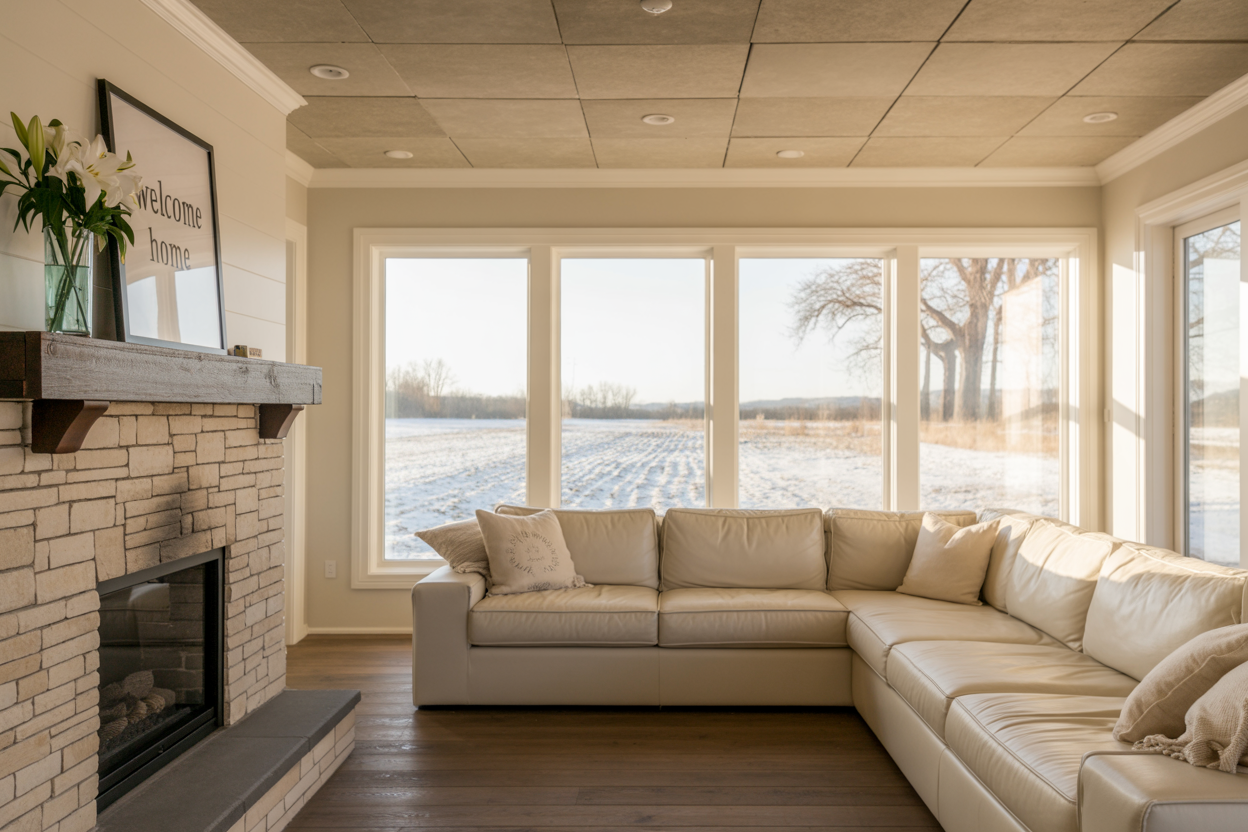
Those speckled acoustic tiles that dominated the ’80s have overstayed their welcome by about four decades. You know the ones – they look like someone sneezed cottage cheese all over your ceiling and called it design.
Modern acoustic ceiling tiles have evolved far beyond their utilitarian roots, but those vintage versions scream “office building circa 1985.” The dated patterns and yellowing surfaces make your home feel more like a waiting room than a living space.
Your ceiling becomes a time capsule that hides retro secrets clashing with modern style. Buyers immediately notice these outdated eyesores above their heads.
The good news? Decorative acoustic ceiling tiles now offer style and sound control without the vintage office vibe. You can maintain acoustic benefits while ditching the dated look.
Clean, flat ceilings create an open, airy feel that modern buyers expect. Those bumpy, textured tiles make rooms feel cramped and outdated.
Replace them with smooth drywall or contemporary acoustic panels that don’t announce their decade of origin.
3. Dark wood beam ceilings with darker ceiling
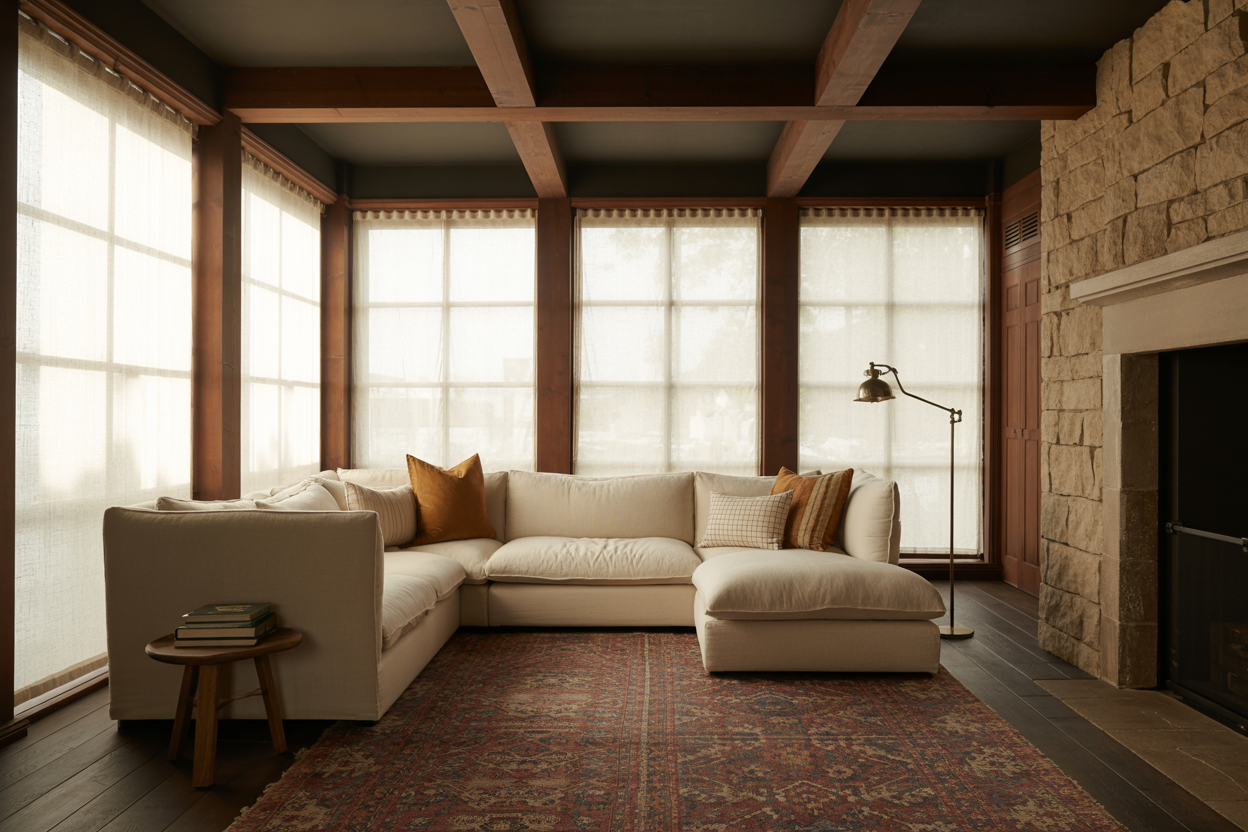
Dark wood beams used to scream sophistication and rustic charm. Now they’re more likely to make potential buyers feel like they’re touring a medieval dungeon.
These heavy, dark timber installations create an oppressive atmosphere that shrinks rooms visually. Your beautiful open-concept living space suddenly feels cramped and claustrophobic when dominated by thick, chocolate-brown beams.
The problem isn’t wood beam ceilings themselves. It’s the obsession with making them as dark and chunky as possible.
Modern buyers prefer light, airy spaces that feel expansive. Dark beams work against this desire by creating visual weight overhead that presses down on the room.
Your Instagram-worthy farmhouse aesthetic becomes a liability when buyers walk through feeling like the ceiling might collapse on them. The dramatic contrast between dark beams and light walls creates harsh lines that fragment the space.
Today’s buyers gravitate toward lighter wood tones or painted beams that add architectural interest without overwhelming the room. If you’re stuck with dark beams, consider lightening them with paint or stain to create a more contemporary, buyer-friendly appeal.
2. Stained or water-damaged ceiling tiles
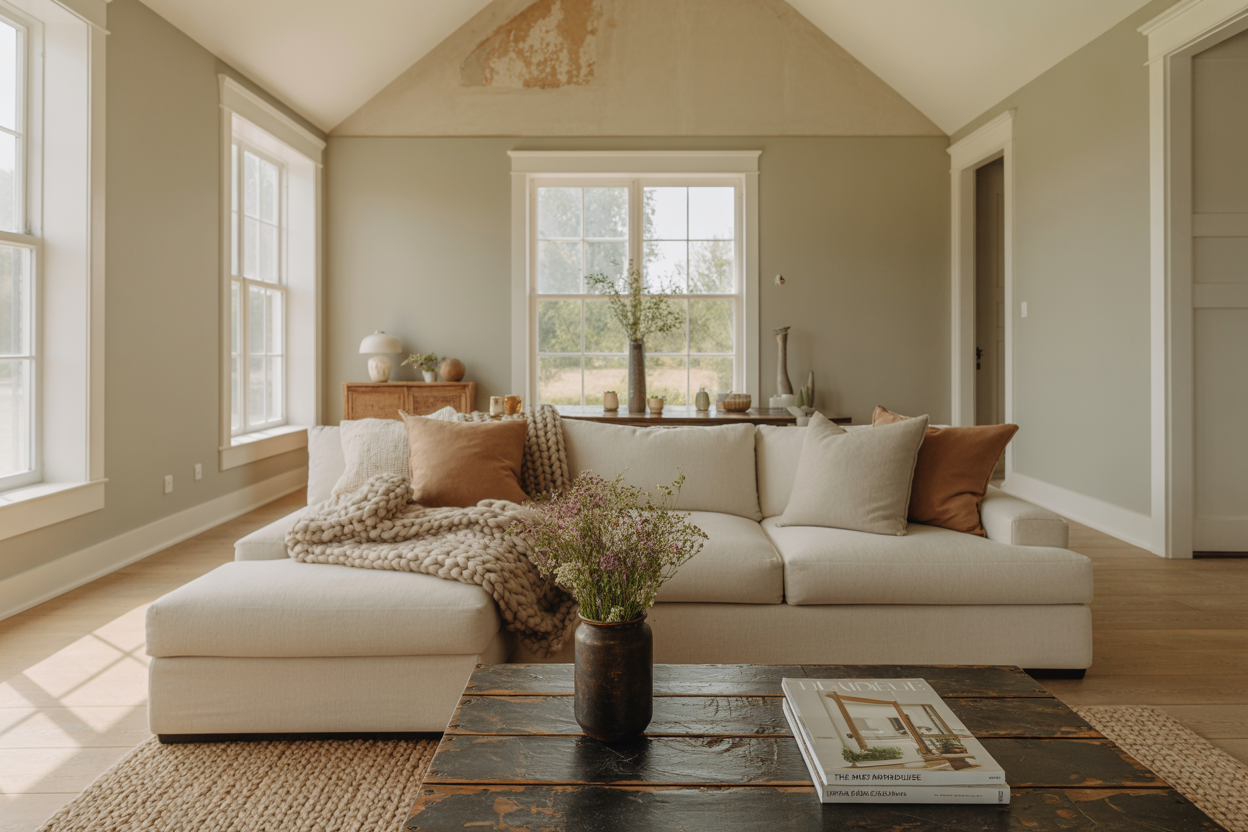
Nothing screams “run away” to potential buyers quite like water stains on ceiling tiles. Those brown blotches and discolored patches tell a story nobody wants to hear.
Your ceiling tiles might look like abstract art, but buyers see dollar signs. They’re calculating repair costs before you can even mention the updated kitchen.
Water damage on ceiling tiles signals bigger problems lurking behind the scenes. Leaky roofs, burst pipes, or HVAC issues all come to mind when buyers spot these telltale signs.
Even if you’ve fixed the underlying problem, those stubborn water stains remain as evidence of past troubles. They’re like a criminal record for your ceiling.
The good news? Removing water stains from ceiling tiles is often more manageable than you think. Sometimes a simple cleaning solution works wonders.
If cleaning doesn’t cut it, replacement tiles are your best bet. Your real estate agent will thank you when buyers stop asking about “that suspicious brown spot” during showings.
1. Popcorn ceilings with bumpy texture
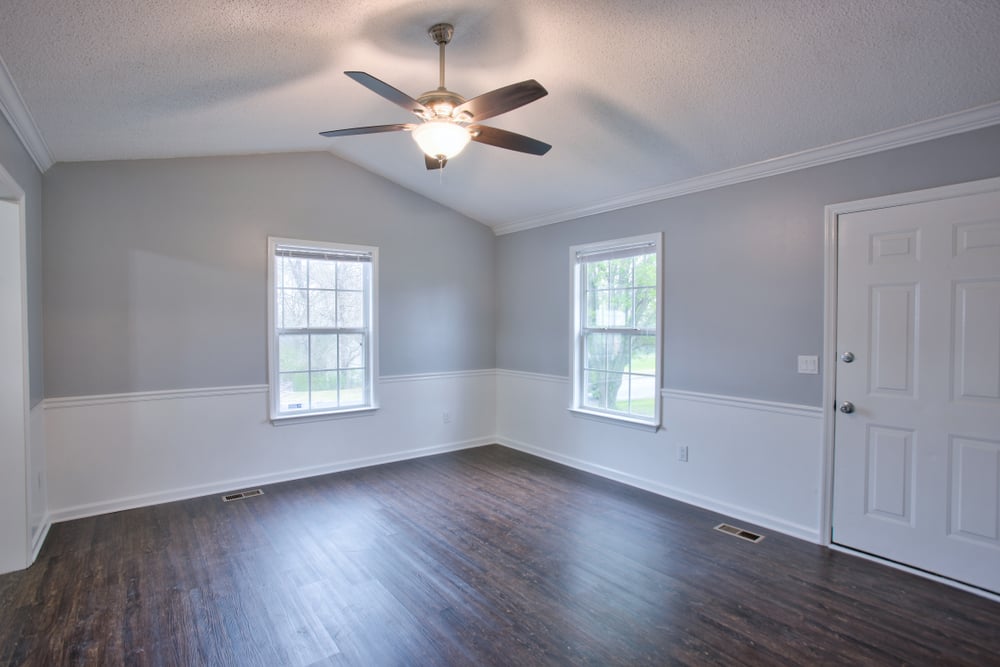
Your popcorn ceiling with its cottage cheese-like texture might have been the height of sophistication in 1975, but today it screams “time capsule home.” These bumpy surfaces were popular because builders could hide imperfections and add acoustic properties without much skill.
The spray-on technique was cost-effective during the construction boom. Your ceiling installer could cover up uneven drywall joints and call it a design feature.
Modern buyers view these textured surfaces as maintenance nightmares. Dust clings to every bump, making cleaning nearly impossible without a vacuum and patience you don’t have.
Health concerns about asbestos content in older popcorn ceilings add another layer of buyer hesitation. Many installations from the 1950s through 1980s contained asbestos fibers.
Your property value takes a hit when buyers walk into rooms with these dated surfaces. Modern buyers prefer smooth, contemporary ceiling finishes that reflect current design trends.
The visual weight of popcorn texture makes rooms feel smaller and darker than they actually are.
